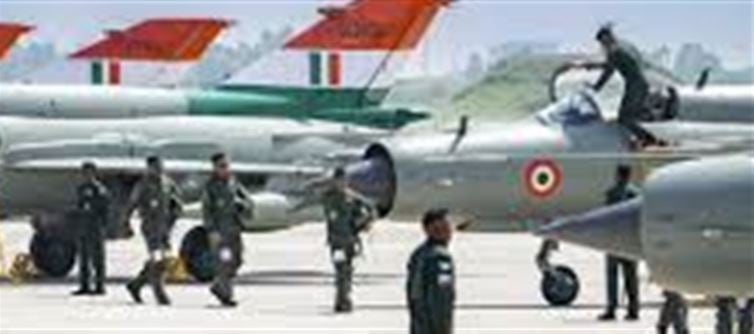
On Friday, the indian air Force (IAF) officially retired its fleet of MiG-21 fighter jets after 60 years of service, marking the end of a historic but controversial chapter in India’s military aviation history. The MiG-21 was a cornerstone of India’s air defense for decades and has witnessed numerous battles, upgrades, and controversies, but now it takes its final flight into history.
Key Highlights:
· Ceremonial Flypast: The retirement of the MiG-21 was marked with a grand ceremonial flypast, where the jets made their final appearance in the skies, soaring over key locations in India. The event was attended by high-ranking officials from the indian air Force and government.
· Decades of Service: The MiG-21 entered service in 1963 and played a crucial role in India’s air defense during several major conflicts, including the 1971 India-Pakistan War and Kargil War in 1999. It was known for its speed and agility, making it one of the most iconic and recognizable jets in the world.
· Role in air Defense: The MiG-21 served as the backbone of India’s air defense for more than 60 years, participating in numerous operations and surveillance tasks. It was a symbol of India’s military might during the Cold war era and beyond, providing essential air superiority for decades.
A Controversial Legacy:
Despite its pivotal role, the MiG-21 was also notorious for its safety record, with numerous crashes over the years, leading to the aircraft being humorously dubbed the "Flying Coffin" by some. This has been a subject of debate over the years, with the IAF facing pressure to phase out the MiG-21 earlier than planned due to these safety concerns.
· Upgrades and Modifications: Over the years, the MiG-21 fleet was upgraded several times to improve its performance and safety features. Modern avionics, weapons systems, and engines were incorporated to keep the aircraft relevant. However, with the rise of advanced multirole fighters like the Dassault Rafale and Sukhoi Su-30MKI, the MiG-21's time had come.
Significance of the Retirement:
1. Modernization of the air Force: The phasing out of the MiG-21 is part of the indian air Force’s broader effort to modernize its fleet with more advanced, capable aircraft. The Tejas light combat aircraft (LCA), a domestically produced fighter jet, is expected to take on more responsibility in the years to come.
2. A Moment of Nostalgia: For many in the IAF, the MiG-21 holds nostalgic value, representing the aircraft that kept the skies safe for a long time. The jets trained thousands of pilots and formed the core of the IAF during the Cold war, and for many veterans, its retirement marks the closing of a defining chapter.
3. End of an Era: The MiG-21 will forever be remembered as a symbol of India’s military evolution. It served as a workhorse for the IAF during some of the nation’s most challenging times. Its retirement signifies the end of an era for the IAF, but it also reflects the shift towards more advanced technologies and combat capabilities.
Looking Forward:
As the IAF bids farewell to the MiG-21, it shifts its focus to modernizing its fleet with newer, more capable aircraft like the Tejas, Rafale, and Sukhoi Su-30MKI. With an evolving security landscape, India’s air defense system is increasingly focusing on stealth, multirole capabilities, and advanced avionics, which will be better suited to face future threats.
The MiG-21 may be retiring, but its legacy will remain in the annals of indian military history, as a key contributor to the nation’s defense for over six decades. The IAF will continue to remember the aircraft for its service, but the future lies in the skies with newer and more capable machines.
Disclaimer:
The views and opinions expressed in this article are those of the author and do not necessarily reflect the official policy or position of any agency, organization, employer, or company. All information provided is for general informational purposes only. While every effort has been made to ensure accuracy, we make no representations or warranties of any kind, express or implied, about the completeness, reliability, or suitability of the information contained herein. Readers are advised to verify facts and seek professional advice where necessary. Any reliance placed on such information is strictly at the reader’s own risk..jpg)




 click and follow Indiaherald WhatsApp channel
click and follow Indiaherald WhatsApp channel